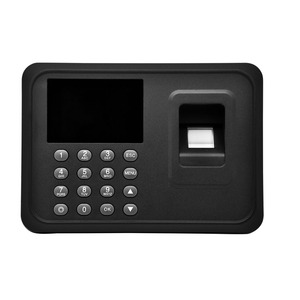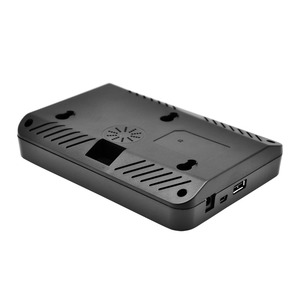
All categories
Featured selections
Trade Assurance
Buyer Central
Help Center
Get the app
Become a supplier

(605 products available)





















































Suppliers offer buyers a variety of barcode attendance systems, all with unique benefits and characteristics. These systems are both powerful and scalable, with many options for improving organizational efficiency.
This is a brief overview of the different kinds of attendance systems that use barcodes to scan students for attendance.
Standalone Barcode Attendance Systems
A non-networked standalone system is the simplest and most affordable option for scanning barcodes and registering attendance. In small learning centers or single-site schools, these systems work rather well, capturing attendance data in real-time without the necessity for complex infrastructure. The simplicity of use of this type of software is coupled with the low cost of ownership; users only need basic training to operate the system and read barcodes without much effort. However, one disadvantage of these systems is that if one needs to analyze or aggregate attendance data from multiple locations or over a longer period of time, one has to conduct this analysis manually because reports cannot be sent over the network.
Cloud-Based Barcode Attendance Systems
A significant shift in the working methodology of attendance systems is brought about by the introduction of cloud-based systems. Because in these systems data gets stored on the cloud, users can easily retrieve the data from any location in the world. Such features are particularly valuable for organizations that have a number of branches in different places or for those that have mobile workforces. Another benefit of the cloud is that a number of people can share information at the same time, which helps facilitate cooperation and reduces problems with exchanging information. Moreover, cloud systems usually have powerful data analysis features that will help users identify attendance trends and possible issues.
Integrated Barcode Attendance Systems
Integrated systems are a good fit for larger institutions since they provide integration with other enterprise resource planning (ERP) modules, human resource management (HRM), and scheduling systems. In educational institutions, for instance, integrated systems will capture attendance through scanning and then automatically update student records without the need for additional operations. Such systems are useful thanks to their capacity to collect large volumes of data and automate processes across many different business functions. However, being larger, these systems are far more expensive and difficult to install, which makes them appropriate for large organizations only.
Mobile Barcode Attendance Systems
The attendance solutions based on mobile barcodes have increased in popularity due to the general pervasiveness of smartphones. By utilizing such features as an attendance scanning application, the phones can be turned into powerful tools by scanning barcodes to take attendance. This option is most useful in cases where flexibility and portability are prized, such as in outdoor programs, off-site internships, or field trips. Development and deployment costs are lower than in traditional systems because mobile solutions typically require less hardware investment. Such systems are, however, sensitive to drops in mobile network connectivity, which can result in interruptions if there is no internet connection.
The basic function of a barcode attendance system is to automate the process of recording attendance by using barcodes. A few key roles include these:
Barcode attendance systems include a variety of innovative features and are more than just scanners to improve attendance processes:
Good design is an important prerequisite for performance in any application, and attendance systems hold no such exception. Aspect of design that influence efficacy and the user experience include the following:
Barcode attendance systems are usually deployed in various settings, not only in classrooms or at workshops but also as prominent attendance solutions for large events and in corporate boardrooms.
Educational Institutions
For most schools and universities, attendance is an extremely crucial thing to monitor, especially when the law requires academic institutions to report such cases. Usually, schools deploy attendance systems in classrooms through scanning student ID cards, which makes attendance marking fast and simple. Advanced features of these systems might include tracking participation in specific programs or integration with academic performance monitoring systems and providing a favorable environment for learning.
Corporate Training and Seminars
In the corporate world, attendance is usually required to be captured during training sessions, workshops, and seminars. Barcode systems of attendance allow employees to quickly scan badges or tickets as they enter venues, making the process more efficient. These systems may be integrated within larger frameworks for management of human resources, enabling a comparison between attendance records and several activities of employees. During conferences held by external companies, many days or venues over which the businesses put on attendance systems may be managed through mobile or cloud solutions.
Conferences and Events
Large events or conferences present a fertile area where barcode systems of attendance may be beneficial. With pre-registered or ticketed events, attendees are able to check in quickly by scanning their tickets with a QR code on their smartphones. Management systems give event organizers the ability to monitor real-time participation levels, so they are in a position to make decisions with the data, e.g. managing space and better resource allocations.
Workplaces
Many companies are now adopting barcode-based attendance systems to enhance their attendance tracking and workforce management processes. Employees can clock in and out using unique barcoded ID cards, which simplifies the process and reduces human error. These systems can be integrated with payroll software, enabling businesses to automate time tracking and payroll processes in a more efficient and accurate manner.
Field Trips and Outdoor Programs
Field trips and outdoor programs generally have an unpredictable element in attendance monitoring; that is, this type of scenario is where mobile barcode attendance systems shine. Staff on field trips can have attending ID cards or tickets scanned into a smartphone to take attendance instantly, cutting down on time and increasing accuracy. This solution is flexible and portable, which allows organizations to run outdoor programs without the need to lug heavy hardware around.
Nature of the Organization
The type of attendance system should take the first step in operationalizing effectiveness by considering the nature of one’s organization. Little or no time is taken in processing attendance for small organizations like local training centers or small corporate offices, so simple barcode systems are fine for such organizations. Larger organizations or those with more complex needs, which need integrated systems or cloud-based systems for effective processing, would require more complex solutions. One also needs to assess how well the system fits the unique needs of their sector – for instance, the education sector's attendance systems might need extra features such as grade tracking.
Scalability
Any selection of an attendance system will be made in the context of anticipated organizational growth. Ideally, a simple system should work well if the organization is small at present. On the other hand, this should not be the case: a system that is unable to grow with the organization will cause issues further on down the line. When selecting an attendance solution, it is important to look for systems that can handle increases in user numbers, data volume, and functional complexity. Good systems have general-purpose features but can still be fine-tuned as the school or organization grows and its needs change.
Integration with Existing Systems
Assess the prospective system's integration capabilities with other software already in use, such as scheduling, human resources, or academic performance management systems. Integrated systems contribute to improved results because they remove redundancy in tasks by sharing data across systems. One may need to select an integrated system based on whether or not the organization utilizes other voluntary resource systems – for instance, ERP or HR systems require that integrated attendance systems be used.
Budget
Cost of ownership is one other important factor to consider. Simple and standalone systems are likely to be cheaper, recommended for small organizations. Although cloud and integrated systems tend to be more costly at the time of implementation - owing to their technology and features - they are much more powerful, and scalable, which makes them a worthy investment in the long run. When developing a budget, one should account for expenses during operation, such as software upgrading, system integration, and maintenance supports.
User Experience
The better the user experience, the more likely that employees, students, and attendees will be willing to use the system. Lessen the time and effort required for training by searching for attendance systems with interfaces that are simple and easy to use, taking the attention span of users into consideration. Responsive design means that the system should work across various devices because, by this time, users do not want to be restricted to desktop systems when checking in or taking attendance. Simple systems with intuitive flow will likely deliver higher accuracy in data capture with higher satisfaction from users.
A1: The main role of the attendance system is scanning barcodes to automate attendance records' collection and monitoring. This makes the process quick and easy while also ensuring accuracy.
A2: Integrated attendance systems enable organizations to link attendance with other processes such as recruitment and schedule management. Such creations save time by avoiding many data entries and increasing efficiency due to process automation.
A3: Yes. They are particularly suited to field trips, outdoor activities, and even events by using mobile technology. Attendees can be checked in with a smartphone by scanning barcodes, making the process more flexible and accurate.
A4: Other factors may include the system's scalability, budgetary constraints, integration possibilities with other software, user-friendliness, and the type and size of the organization. Basically, the selection should be based on the organization's current needs and future expectations.
A5: Modern barcode attendance systems capture, track, and report the data they collect, developing simple and complex attendance reports. These systems might also identify and assist users in relatively better understanding the patterns by analyzing attendance data and possibly assisting in decision-making.